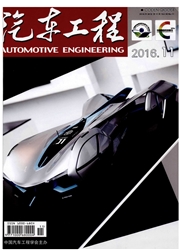

 中文摘要:
中文摘要:
使用车载排放测试系统测试了北京市4种不同技术路线的14辆国V车辆的实际道路排放情况。结果表明,氧化催化器( DOC)能明显降低天然气公交车的CO排放,但其对THC的降排效果有待提高。采用EGR技术的天然气公交车在低速时NOx减排效果较柴油车好,但是高速时没有优势。使用SCR系统的柴油车CO和THC排放较低,但低速时NOx 排放较高。而天然气车由于排气温度较高,加装SCR系统后可有效降低NOx排放,效果最理想。天然气公交车的颗粒物质量排放远低于柴油车,但是由于稀释方式的影响,其核模态的颗粒物数量较多。
 英文摘要:
英文摘要:
The real world emissions from 14 State-V buses with four different after-treatment technologies are measured with portable emission measurement system. The results show that diesel oxidation catalyst can appar-ently reduce the CO emission of CNG-fueled buses, but its effect of reducing THC emission need to be improved. The CNG-fueled buses adopting EGR technology have a better emission reduction effects than diesel buses at low speed but there is no superiority at high speeds. The diesel buses with SCR system have lower CO and THC emis-sions but their NOx emissions are relatively high at low speeds, while the CNG-fueled buses with SCR system can ef-fectively reduce NOx emission due to higher exhaust temperature, being the most ideal choice. The particulate mat-ter mass emissions of CNG-fueled buses are far lower than diesel buses, but due to the effects of the way of dilution they emit more particles in nucleation mode.
 同期刊论文项目
同期刊论文项目
 同项目期刊论文
同项目期刊论文
 期刊信息
期刊信息
